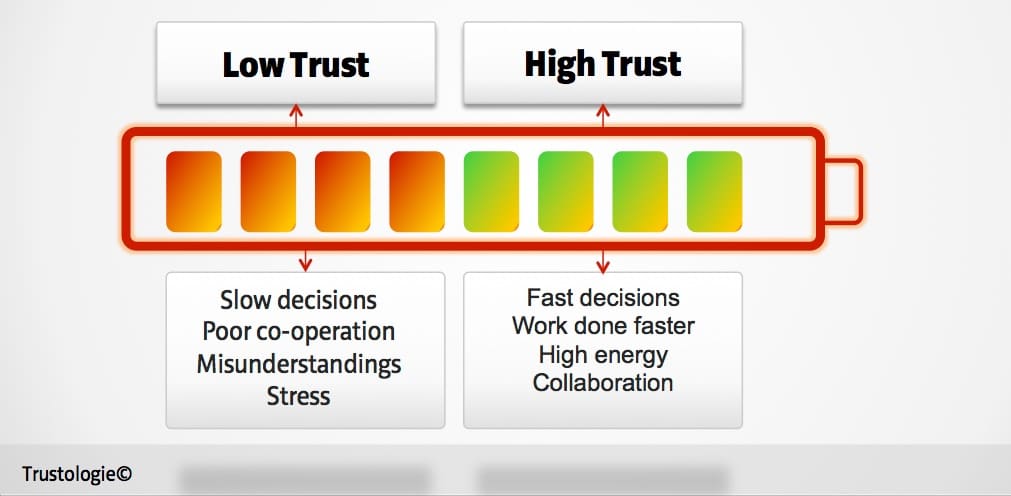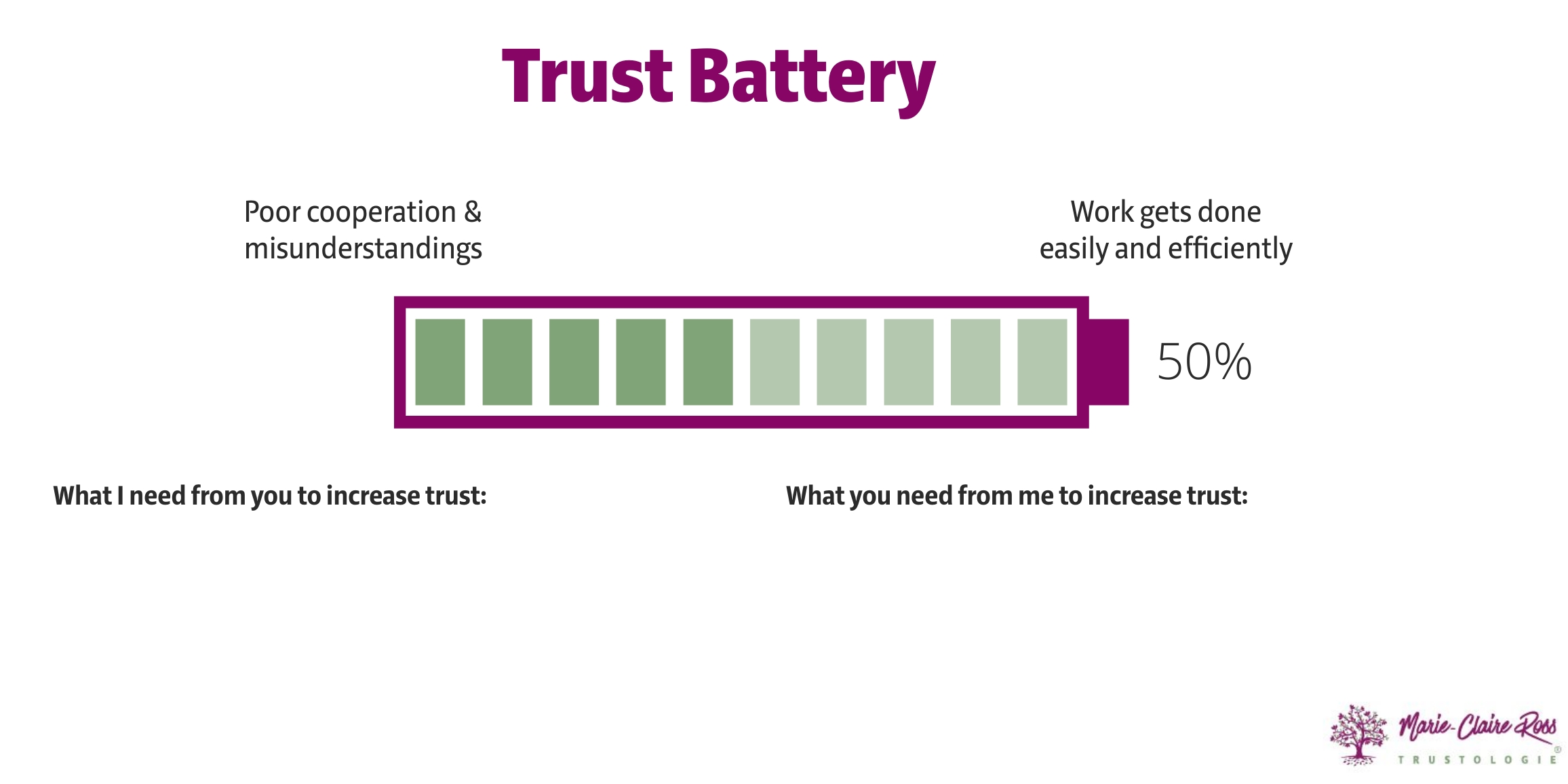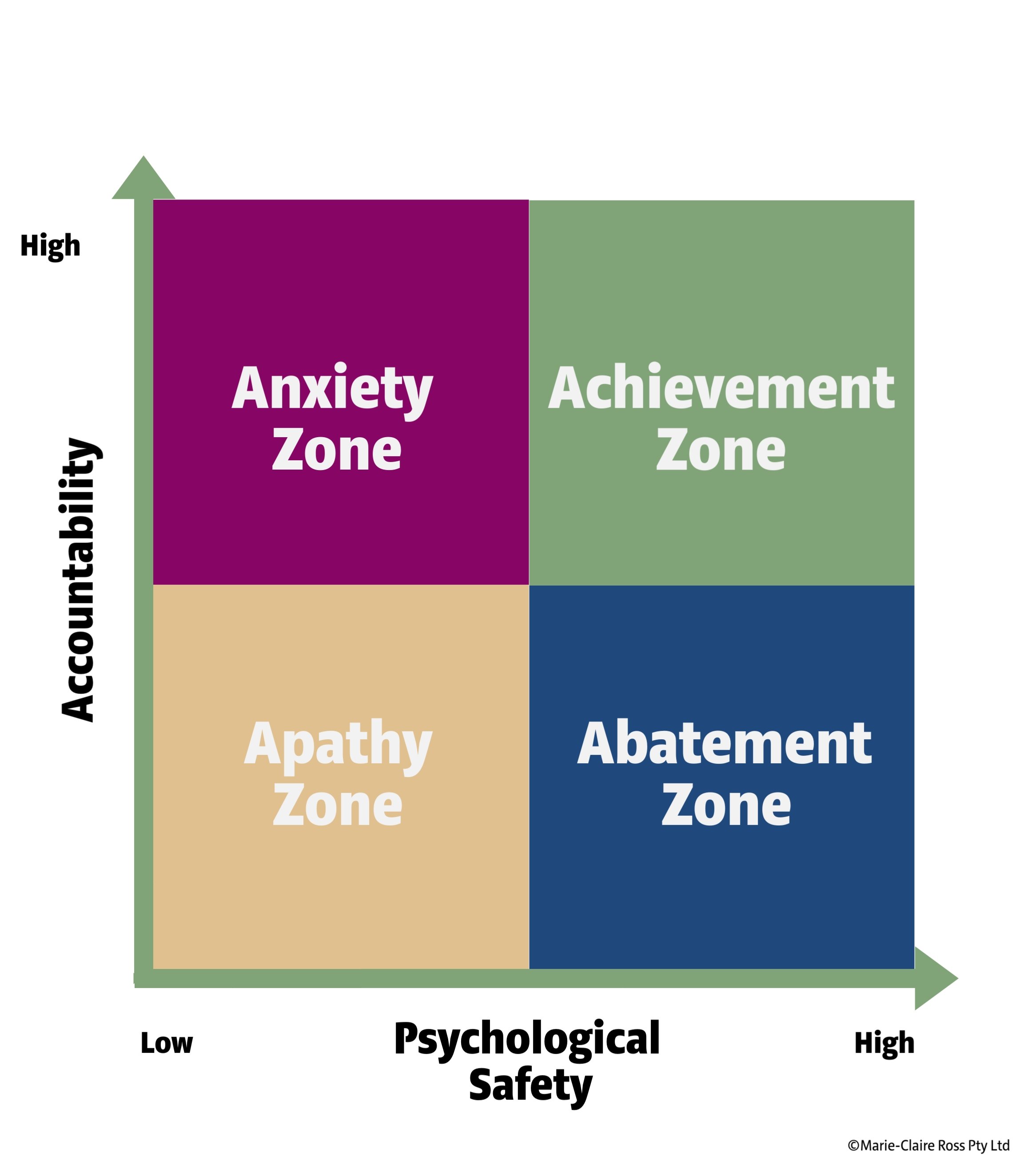So you think you're a great boss. You care about your people. You create a happy work environment. And you bring in the best chocolate brownie for your team (back when we could do that). Yet, sometimes you feel let down that your direct reports don't do work at the right standard or selectively hear which tasks they need to do. Sound familiar?
Okay. So maybe I might be talking about myself. Or a friend of mine. But let me tell you about what I did to turn this situation around. To improve accountability, I reference a battery. Not any type of battery. But a trust battery.
Sound kooky? Let me explain.
The key to improving accountability is to set clear expectations and champion reciprocal trust with others. It's not always easy because we often don't spend the time to do this, don't even know how we prefer to work or feel uncomfortable talking about our expectations.
The way to get around this is to make talking about accountability a daily or weekly habit. We can make the process fun and less compliance sounding by working with visuals and metaphors that are more easily understood by our emotional brain. This is critical to improving workplace behaviours because people are more likely to accept change if they can feel why it's important. Leaders who communicate to the emotional, feeling based brain more easily build a positive team culture.
So how does this work?
By showing a trust battery visual and explaining how the current level of trust between two people is like a battery. Every time people interact with each other trust is recharged, discharged or produces no noticeable effect.
Essentially, what you are doing here is teaching people how you want to be treated and how you need them to act at work. However, the catch is that you must know yourself - how you like to work, receive communication and your expectations of your direct reports. And how your team likes to work.
It's a particularly effective tool to use with new starters. Realistically, they subconsciously don’t trust their boss and you don’t trust them. Neither of you know how capable or reliable you both are. So to be fair to both of you, sit down with them and explain the trust battery concept and why it’s charged at 50 percent.
Explain that when the trust battery is high and has a lot of power – work gets done easily and efficiently. But when the trust battery is getting flat – cooperation is low and misunderstandings reign.
At the start of the working relationship, you mention that because neither of you are really sure if you can trust each other yet, you are willing to support them and give them the benefit of the doubt. Over time, if your interactions are positive, the battery will charge up. Importantly, you explain what exact behaviours are required to build trust and what will drain trust.
Importantly, you must also turn it around and ask them what they expect from you to charge their battery. The conversation must explicitly discuss their role, accountabilities and expectations. This is extremely powerful because this is where you start to understand each other better and reduce any misinterpretations or potential frustrations.
The trust battery metaphor also works in and between teams, as well as in existing relationships. Using a metaphor approach helps bridge the discussion between harmful behaviours and actions. It is also a highly effective leadership tool as it:
- Forces you to analyse how you like to work and what you need to feel supported.
- Helps you get clear on your intentions (a powerful method to improve our clarity in our communication that reduces our behaviours being misconstrued by others).
- Encourages the leader to extend trust first (an important skill in improving trust with others).
- Puts direct reports in a position where they have some power (autonomy) in explaining their needs and expectations (this is important to improve job fulfilment).
It is also quite disarming because we can all comfortably explain and understand when the trust battery is depleting and when it is charging. Specificity of what we require is much easier to talk about. Rather than the unhelpful tendency of discussing trust in general self-centred terms that makes people defensive and resentful.
I use this when I work with new people and in performance discussions. I also teach this to people that I coach. It helps bring deeper insights and better connection with others. And it's really fun and conversational. Give it a go. You won't regret it.



